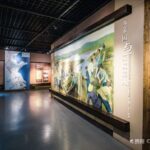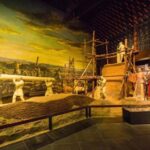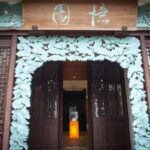The Jiangning Weaving Museum is located in the Dahonggou area of Nanjing and is a modern museum constructed on the site of the former Jiangning Weaving Bureau, designed by the renowned architect and academician Wu Liangyong. The ‘Jiangning Weaving’ was an official institution during the Qing Dynasty, specializing in the production of imperial and official satin fabrics. From the Kangxi to the Qianlong period, the Jiangning Weaving Bureau gradually became the emperor’s southern tour palace, with an unprecedented scale.
The Jiangning Weaving Bureau lasted for more than 260 years, witnessing the rise and fall of the Qing Dynasty. The Jiangning Weaving Museum will recreate the history of the Jiangning Weaving Bureau, which flourished for over 200 years from its establishment in the Shunzhi period to its abolition in the Guangxu period. Emperor Kangxi visited six times and stayed five times; the museum will display a 4D version of ‘Emperor Kangxi’s Southern Tour Map’.The Jiangning Weaving Museum features the Xiaohonglou Library, where visitors can access materials related to ‘Dream of the Red Chamber’ and view various editions of the novel as well as exhibits related to the author Cao Xueqin. Additionally, there is a special exhibition hall for ‘Dream of the Red Chamber’ and a screening room, showcasing the diverse culture of the novel. The museum’s collection includes ancient Chinese dragon robes and cheongsams collected from overseas, with Tang Dynasty brocades being particularly valuable.

Opening hours: July 2nd to December 31st, Tuesday to Sunday, 09:00-17:30; Monday closed; Mid-Autumn Festival and National Day, 08:30-21:00.

Preferential policies for three categories of personnel: With the preferential treatment certificate of martyrs, military personnel who died in service, and deceased military personnel from the People’s Republic of China. Free for military personnel: With the preferential treatment certificate for veterans of the People’s Republic of China; with relevant documents for active military personnel, disabled military personnel, and military academy students with military status from the People’s Liberation Army and the Armed Police Force.










